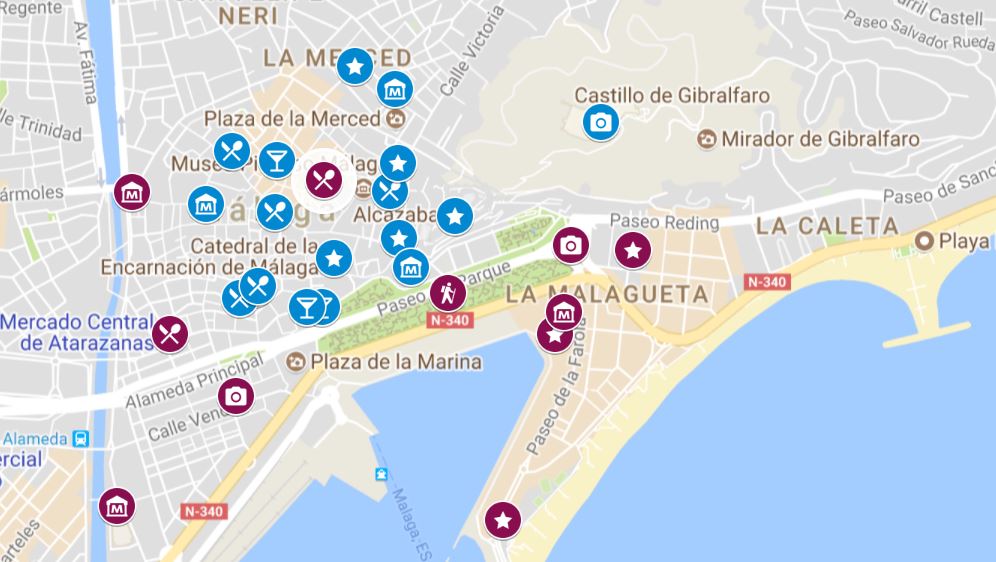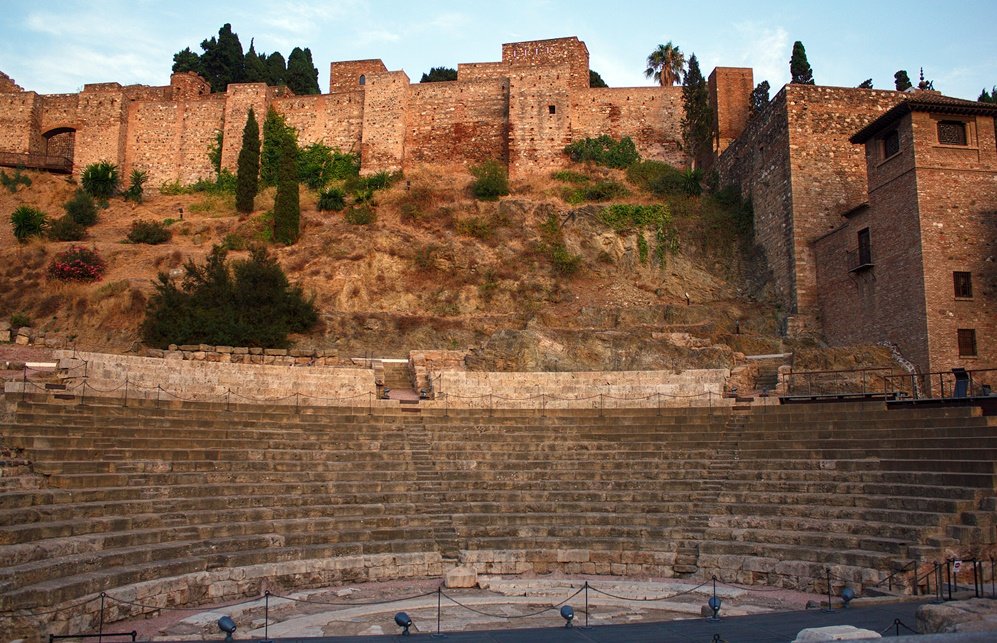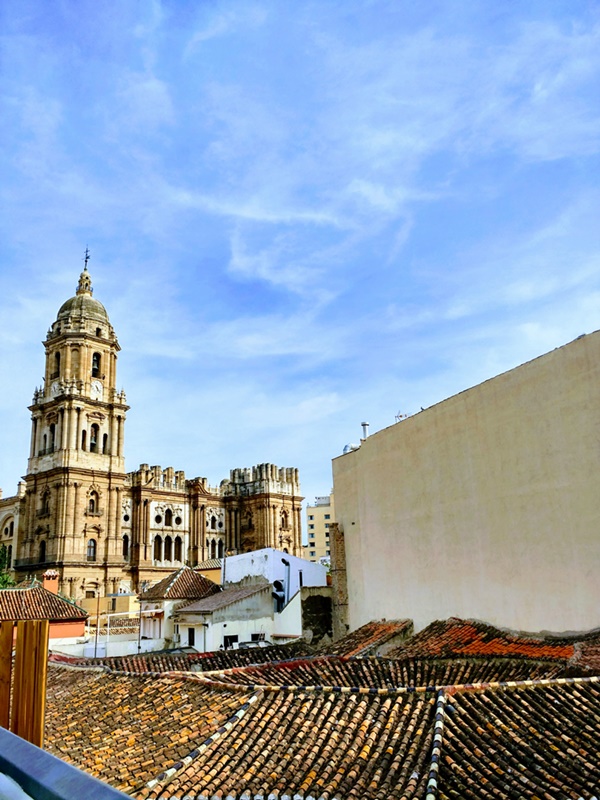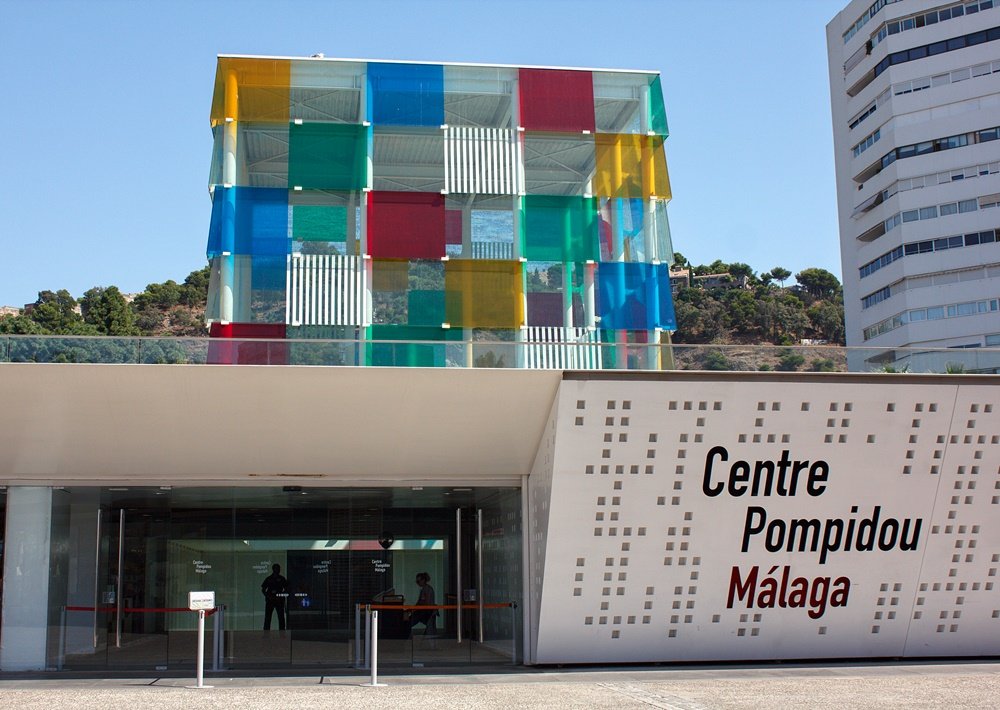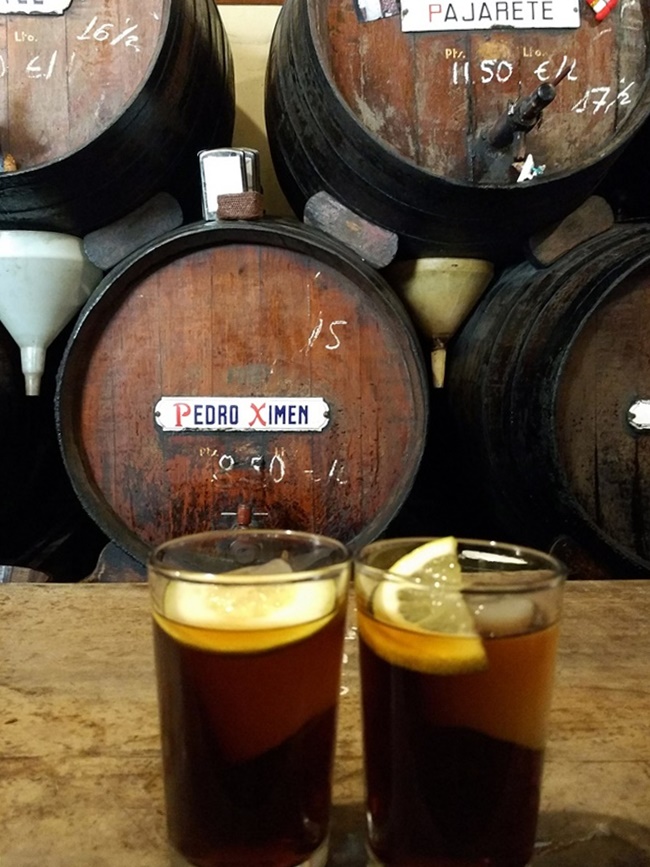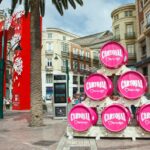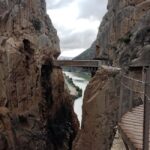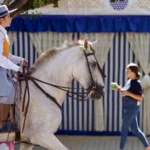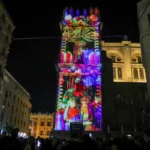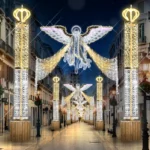This itinerary to see Malaga in 2 days is the most common to do for most people, since spending two days in Malaga city seems like the recommended time to enjoy the city, at least in your first visit.
I have designed a two-day itinerary through Malaga that includes all the sites of the tour to visit Malaga in 1 day, but with more details and stops, plus the visit to other interesting places and the entrance to some of the city’s museums, which you can choose yourselves. In addition, having more time, I have added new food options.
Itinerary to visit Malaga in 2 days.
One of the advantages of Malaga is that almost all places are accessible on foot as the best option, so prepare good shoes to walk for several hours.
The first thing is to locate ourselves, so I leave you the map and summary of all the places to visit, see and do in Malaga in 2 days.
15 Highlights to see Malaga in two days.
For each place or activity, you have information on the route and, by clicking on the link, specific information about each site.
- Gibralfaro Castle.
- The Citadel.
- Roman theatre.
- Viewpoints: Alcazaba and Gibralfaro.
- The Central Market of Atarazanas.
- Picasso Museum and Malaga Museum.
- Carmen Thyssen Museum
- Contemporary Art Center (CAC)
- Muelle Uno (Pier One)
- Malaga Cathedral.
- Larios Street.
- Malagueta beach.
- Terraces with views where you can have a drink.
- Tapas in the center of Malaga.
- 20 free things to do in Malaga
If you are not staying in the center of Malaga, check all the public transport options in Malaga to get to the starting point.
Don´t miss my TOP 25 Things to DO in MALAGA city.
Day 1: History and culture of Malaga.
Gibralfaro Castle.
We will start at the Gibralfaro castle, from where the best views of the city are obtained, so we can see the muelle uno (dock one), the lighthouse (la farola), the park, the bullring, the Cathedral of Malaga.
Another good option (and free) is to go up to the Mirador de Gibralfaro, halfway to the Castle, from where you can see the curious boat-shaped gardens next to the Town Hall.
To get from Gibralfaro to the Alcazaba we can walk down to the Paseo Don Juan Temboury, which will take us to the back of the Alcazaba, from where we will walk parallel to the interesting Museum of Malaga, located in the Customs Palace, to the entrance of the old arabic fortress.
The Alcazaba of Malaga.
We will continue our one-day tour of Malaga capital towards the Alcazaba, the old Arab fortress that gave character and importance to Malaga. You have all the information on schedules, prices and tickets in the link about the Alcazaba.
Do not forget to go up to the viewpoint of the Alcazaba, free and that will offer us a different view of the historic center.
In Alcazabilla street you can see all the historical character of the city, contemplating 3 levels of history:
- Roman Theater in the foreground, from the 1st century.
- The Alcazaba, from the 10th-10th century.
- Gibralfaro Castle, which served as protection for the Muslims.
If you want to delve into the history of Malaga, you should look for the time (60-90 min) and visit the Museum of Malaga, which is also free for European Union citizens.
El Pimpi.
Then we will walk through its adjacent streets, with several bars where you can have a drink and even the back of the famous Pimpi bar, the perfect place to make a stop before continuing walking towards the historic center.
Right in front of the entrance to the Alcazaba there are some large doors that correspond to two of the most important Holy Week brotherhoods in the city: Students and the Holy Sepulchre.
Many people will say that the Pimpi is very touristy, which it is, but a visit to Malaga without knowing it would not be complete and even more so in two days in the city.
Picasso environment.
The second part of the day will begin in Plaza de la Merced, where Picasso’s birthplace (now it´s a museum) is located. On the side we will find the Cervantes Theater, the central point of the Malaga film festival and a cultural reference point in the city.
We will continue through the small streets until we reach Plaza de la Merced again and go down Calle Granada, where we will find the church of Santiago, one of the most important and beautiful in the city and where Pablo Picasso was baptized (remembered on an attached plaque ). In addition, it is the starting point of the Camino de Santiago from Malaga, the so-called Camino Mozárabe.
The city’s Jewish quarter was formerly located in this environment, with some streets (Tomás de Cózar, Plaza de la Judería) reminiscent of that time.
Picasso Museum, Thyssen or Malaga Museum.
After a tour around these streets, it is time to choose between several museums located in the historic center, the options could be:
- Picasso Museum (Palacio de Buenavista, Calle San Agustín, 8).
- The Carmen Thyssen Museum (Calle Compañía, 10).
- Museum of Malaga (Plaza de la Aduana).
Perhaps the Museum of Malaga is the largest of all of them, but with a cultural and historical component of the city without comparison to any other.
My personal bet would be to visit the Museum of Malaga, as it is the one that shows the history of the city, a complete archaeological tour and a good collection of paintings.
After the museum it will be time to have lunch. The area around Calle Granada and Plaza del Siglo have some interesting options, from the typical midday menus (Menú del día) to the à la carte menu.
Where to eat in Malaga?
If you feel like tapas in the center, don’t miss “my classic tapas route in the center of Malaga“.
Another option would be to look for a place to eat near the sea/beach, the Malagueta area, El Palo or Pedregalejo and Huelín would be other good choices.
- Discover what to eat in Malaga and its typical dishes.
- For more gastronomic options, you can consult our article Where to eat in Malaga?
Malaga Cathedral.
The afternoon session will continue towards the area of the Cathedral of Malaga, which we will be able to observe from different perspectives, along Císter Street where we will see the entrance used to visit it, its gardens, the Patio de los Naranjos and from the Plaza del Obispo.
Malaga Cathedral is known as La Manquita, because it only has one tower. You have more information in the link about the Cathedral.
The interior of the Cathedral is beautiful, but it will be a matter of time and priorities to decide whether to visit it or not.
We will continue walking along Molina Lario street until we reach Plaza de la Marina from where we will see the port and Pier One that we will visit the following day.
Our destination is the most important street in the city, Calle Marqués de Larios, the commercial epicenter of the historic center. As it is pedestrianized, it is a delight to walk through it until you reach the Plaza de la Constitución, from there we can get lost in its little streets (Especería, Compañía, Nueva, etc.) and it can be a good place to make the purchases we need.
Tapas route through the Center of Malaga.
To finish your first day in Malaga city, I propose a small tapas gastronomic tour of my favorite places.
We could start with the Quitapenas tavern (Calle Sánchez Pastor, 2), where you can enjoy some fried fish and its secret champagne cocktail. The next place would be one of reference in the city, La Farola De Orellana (Calle Moreno Monroy, 5). For the last stop I leave you two places and you can choose, or visit both: Mesón Lo Güeno (Calle Marín García, 12) and Las Merchanas (Calle Mosquera).
A good option for dessert would be Casa Mira on Calle Larios, with its famous nougat ice cream.
With this, the day would be ending with a good dose of Malaga culture, but there is something else…
The last thing to do: a terrace with views.
If you are looking to have a drink on a terrace, both the Málaga Palacio and Molina Lario hotels have excellent views of the city. Here are 10 terraces with views in Málaga that you should not miss.
You have a quieter place to sit and drink around Plaza del Obispo, Plaza del Siglo or Muelle Uno.
If, on the other hand, you want more atmosphere, the surroundings of the Mitjana square (Marqués del Vado del Maestre square) should be your choice.
Day 2: Contemporary Malaga opened to the sea.
The second day in Malaga will be dedicated to discovering the importance of the sea in the city, both in the past and in the present.
If you are looking for something different, visiting the graffiti and street art of Lagunillas can be an excellent option.
Malaga Central Market (Atarazanas)
We will begin with the Central Market of Atarazanas, recently renovated and where now, in addition to observing the products, we can taste them.
Visiting the city’s markets has become something traditional to see how the city breathes and feels, and the Central Market of Malaga was not going to be less. Here we can see from the fresh fish from the fish market, to a wide variety of fruits and vegetables, going through having a drink or eating inside or on the outside terraces.
As is traditional, the market is closed on Sundays, so plan your visit accordingly.
El parque (Park Walk)
Next, through Puerta del Mar street we will arrive at Alameda where we will walk until we pass the Plaza de la Marina and find the emblematic Paseo del Parque, a beautiful route that will allow us to observe emblematic buildings of Malaga, such as the rectorate of the university, the Bank of Spain or the City Council.
We will finish in the Plaza del General Torrijos, one of the axes of the city and which serves as a link between Pier One, the Malagueta and the Victoria neighborhood.
A classic option for breakfast in Malaga is to have churros with chocolate or a pitufo at Casa Aranda (C. Herrería del Rey, 3)
Heading to the Lighthouse (La Farola)
Our walk will continue towards the Paseo de Reding, bordering the Malagueta bullring, which receives its name from the beach located just behind it and which we will access by continuing along Calle Cervantes.
After a look at the beach or a dip if the heat is tight, it’s time to continue towards one of the emblems of the city, la Farola. From here you get very good views of the city.
Muelle Uno (Dock One).
We will now enter the expansion of the city in the sea, Muelle Uno, where we can pass through the palm grove of surprises, observe the Alcazaba and Gibralfaro from another perspective and have a drink in one of its many bars and restaurants. We will not overlook the vision of the colored cube, which serves as an icon of the Center Pompidou, if we feel like a visit it can be an excellent idea to end the day.
If the visit is on Sunday, the Center Pompidou Málaga has free admission from 4:00 p.m. to 8:00 p.m.
SoHo Malaga.
We will continue the walk until we exit through the entrance of the Plaza de la Marina, to walk along the Alameda to Soho, where among its small streets we can find a lof of graffiti and street art and trendy bars. It is a recently created area, so depending on the day and time, we will find more or less atmosphere.
If we are passionate about art, a visit to the Contemporary Art Center (CAC) can be interesting. The entrance is free.
Antigua Casa de Guardia (Old guard house)
We can end the day strolling through the Santa Isabel corridor, observing the esplanade where the famous Cristo de Mena emerges until we reach the Tribuna de los Pobres, another central point in Malaga’s Holy Week. From there we will take Calle Compañía and end up in Plaza de la Constitución where our tour of Malaga will end, although perhaps it is better to do it in a place of reference such as the Old Guard House (Alameda Principal), having an aperitif (sweet wine, vermouth) before dinner.
Map and more things to see in Malaga in two days.
- Here you have the complete map of the route in Google Maps, with the markers separated by days.
- If you still have time, Malaga is the city of Museums and you have many more at your disposal.
- My top 25 things to do in Malaga city.
- Top 5 Best Flamenco Shows in Malaga - 1 June, 2023
- Christmas in Malaga 2022. What to do and see - 2 December, 2022
- Top 10 Restaurants in Malaga to eat recommended by a local - 18 November, 2022

